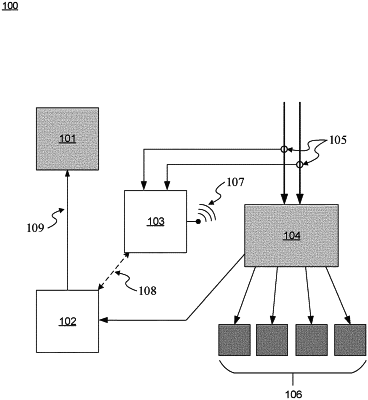| CPC H02J 3/14 (2013.01) [G05B 15/02 (2013.01); H02J 13/00004 (2020.01)] | 24 Claims |

|
1. A method for controlling an electric device, the method comprising:
monitoring, by a controller, a current usage of an electric supply of an electric network;
determining, by the controller, that an excess current capacity of the electric supply is less than a required current of the electric device;
monitoring, by the controller, the use of the electric supply, the monitoring of the use of the electric supply including filtering current oscillations in the use of the electric supply, the current oscillations comprising switchings between at least a high current level and a low current level which occur at or above a predetermined switching frequency, the current oscillations being due to correspondingly switching current draws by one or more loads when operating, the current oscillations being in addition to a generally sinusoidal characteristic of alternating current in the electric network, the filtering comprising filtering out said switchings occurring at or above the predetermined switching frequency;
determining, by the controller and based on said monitoring including filtering, that the excess current capacity has become greater than the required current; and
waiting, by the controller, in response to determining that the excess current capacity has become greater than the required current, a delay time after said determining, the delay time based on a usage profile of the electric supply, the excess current capacity being greater than the required current for the delay time indicating that the excess current capacity is expected to remain greater than the required current for at least a minimum time period appropriate for operation of the electric device, and enabling the current to the electric device conditional upon the excess current capacity being greater than the required current for the delay time.
|